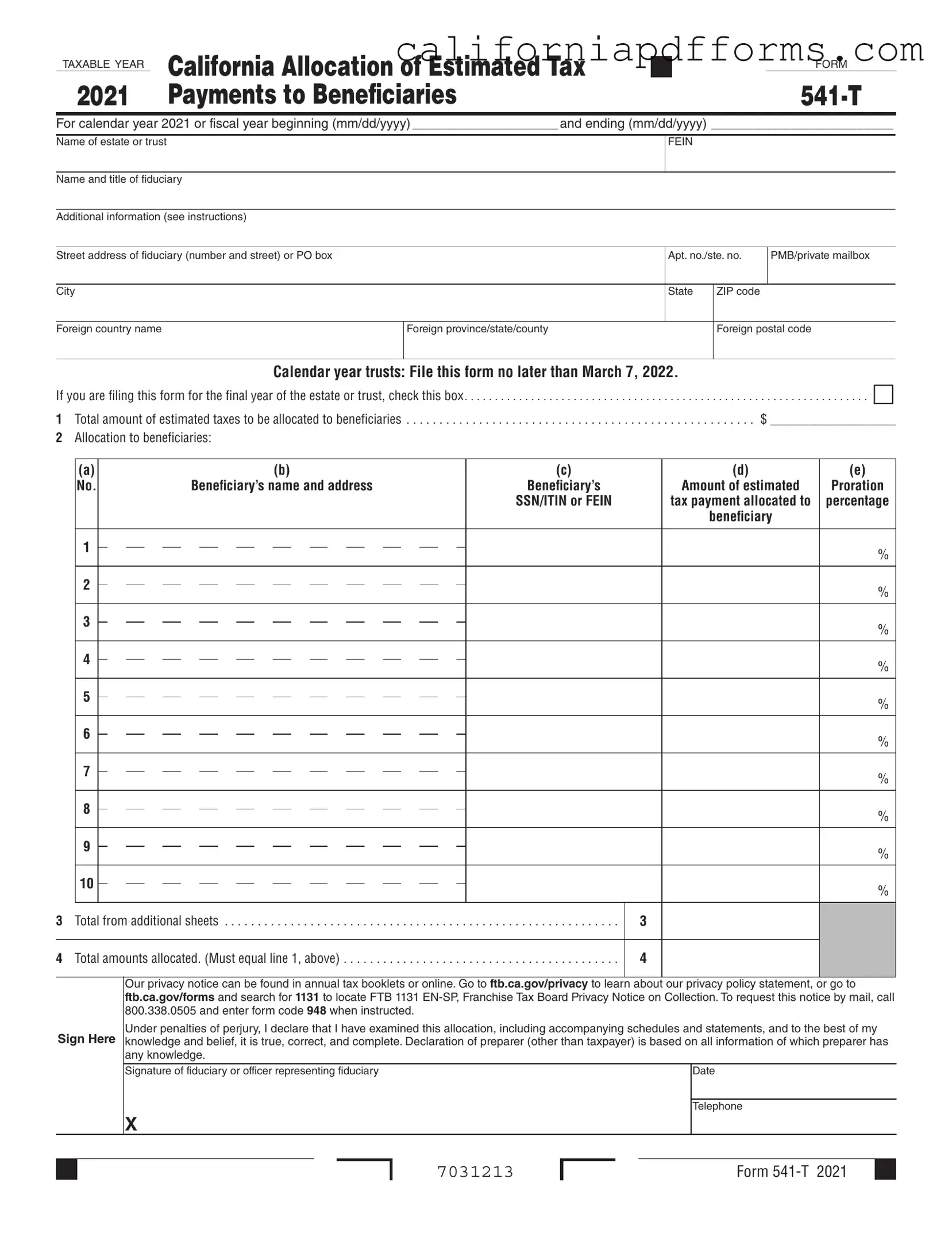Download California 541 T Form
The California 541 T form is used to allocate estimated tax payments made by a trust or estate to its beneficiaries. This form allows fiduciaries to elect how these payments are treated for tax purposes, ensuring that beneficiaries receive proper credit. If you need to fill out this form, click the button below to get started.
Open Your Form Online
